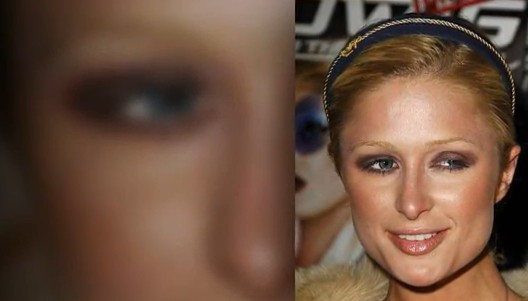Lazy eye is a condition marked by lowered vision caused due to anomalous development of vision during early childhood and infancy. It is regarded as the most common cause of lowered vision amongst infants and children. Lazy eye often tends to affect just one eye, but both eyes may also suffer from it. Non-treatment can result in mild to severe loss of vision.
Lazy eye may not have a noticeable underlying ocular abnormality. It generally occurs due to impaired stimulation of the nerve pathways present between the eyes and the brain. The weaker eye may wander and resultant poor vision in one eye can then trigger the brain to concentrate on just one eye, eventually causing the brain to totally disregard the signals of the weaker or the lazy eye.
Doctors may use eye drops, eye patches, contact lenses or glasses to correct a lazy eye. On occasions, it may need surgical intervention.
Symptoms of lazy eye
Some of the signs and symptoms of lazy eye are listed below:
- The affected eye may wander outwards or inwards
- Patients may elicit improper perception of depth
- The eyes may not seem to work in tandem.
On occasions, only an eye exam may be able to detect a lazy eye.
Causes
It is possible for any kind of ocular abnormality which causes crossing of the eyes or blurred vision to be diagnosed as a lazy eye. It is often caused due to 3 main causes as mentioned below:
- Due to deprivation: Any kind of issue in one eye such as cataract or a cloudy section in the eye lens, etc. can ‘deprive’ clearness of vision in that eye in the affected child, leading to lazy eye.
- Due to strabismus: Strabismus is a condition marked by some imbalance in the ocular muscles, the muscles which hold the eyes in its position. Such muscle imbalance hampers the proper co-ordination of the eyes and prevents them from working in tandem, thereby making the eyes to turn out or cross in. It is considered as the most common cause of lazy eye.
- Due to refractive problems: A substantial difference in the vision capacities of each eye, which may occur due to farsightedness, nearsightedness, or astigmatism, i.e., some kind of abnormality on the ocular surface, can cause this form of lazy eye. The vision problems associated with such lazy eye can be generally remedied via use of contact lenses or glasses.
Other causes of lazy eye: Babies who have a low birth weight or are born prematurely are at greater risk to developing lazy eye.
- Lazy eye has a tendency to run in families.
- Babies with a family history of serious ocular conditions or childhood cataracts are also at increased risk.
- In some cases, a wandering or lazy eye may be one of the first signs of ocular tumor.

How to fix a lazy eye?
There are many ways to get rid of a lazy eye. The treatment is typically dependent on the severity of vision problems. It generally commences during early childhood when the complex network and connections between the brain and the eye are in the stages of development.
A few ways to get rid of a lazy eye are listed below:
- Eye drops: Doctors may recommend the use of a drug known as atropine to be used on the better eye, one or 2 times a week. The eye medication will blur the vision in the better eye and trigger the brain to make use of the weaker eye. It may be noted that such eye drops will not prove to be effective if the better eye suffers from nearsightedness.
- Eye patches: Doctors may suggest the use of an eye patch over the better eye so as to help stimulate the lazy eye. Wearing the eye patch, 4 to 6 hours per day, will most likely benefit a majority of affected children over the age of four years. This therapy also stimulates that section of the brain associated with vision regulation to develop more fully.
- Corrective glasses/lenses: If the lazy eye is caused due to underlying ocular conditions such as farsightedness, nearsightedness, astigmatism, etc., then the doctors will typically suggest the use of contact lenses or corrective glasses. They often prove to be sufficient in getting rid of a lazy eye.
- Surgery: The ocular muscles may need to be surgically repaired if the eyes wander apart or cross. Surgery may also become necessary if the affected child has cataracts or drooping eyelids.
It may be noted that contact lenses and glasses may be adequate to get rid of a lazy eye in some children, while others may also need to go for eye drops and/or eye patches. New ‘active’ treatment options such as computer games, puzzles, drawing, etc., may also be used along with the passive treatment options like patches and eye drops to fix a lazy eye.